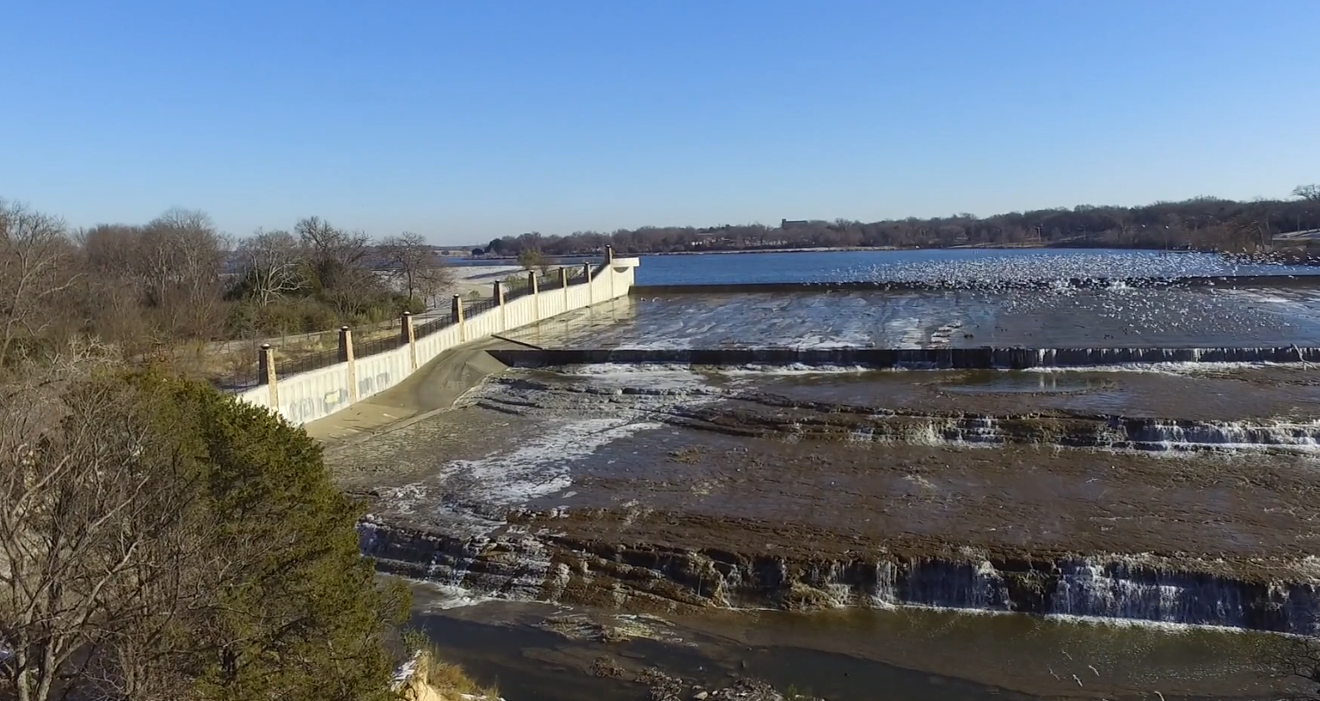Dallas officials reopened water activities at White Rock Lake this week after crews worked all weekend to stave off a million gallons of sewage flowing toward it from Plano. A construction crew there accidentally dug into a sewage pipe, sending the waste to Dallas along White Rock Creek.
The lake already has a reputation for being nasty. D Magazine's Tim Rogers helped confirm it when he swam across the lake and wrote about it in 2003. Rogers swam with hopes of avoiding “broken beer bottles and used syringes.” He survived, and, for the record, swimming was banned at the lake long before Rogers touched it, and the pee he added to its volume probably didn't help its quality. (On Tuesday, D wrote a story titled “Why White Rock Still Needs Our Help.” The answer is silt. It's time to dredge the lake again.)
Earlier this summer, WFAA-TV explained why people are not allowed to swim there. Richard Grayson, a volunteer with the Texas Stream Team, told the television station that high levels of bacteria and nutrients in the lake make it unsafe for humans. He eloquently described what might happen to anyone who took a dip:
“We can’t handle it," he said. "We get sick. We get the runs. You’ll be squirting from both ends.”
Yikes.
Grayson’s group monitors bodies of water across the state. Its work is approved by the Environmental Protection Agency and the Texas Commission on Environmental Quality. Grayson is focused on about 75 bodies of water in Dallas and Collin counties. The Texas Stream Team tracks various levels of what’s in the water, including bacteria, dissolved oxygen, acids, total dissolved solids and electronic conductivity.
In White Rock, the levels of bacteria are too high for safety. Grayson said the bacteria come mostly from four-legged, warm-blooded animals — dogs and cats, raccoons and squirrels. (Last time we saw him, Rogers had two legs, but we didn't take his temperature.) White Rock is in the middle of a residential area in a bustling city. When it rains, bacteria from animals flow from yards and parks, down storm drains and into the lake.
White Rock was built in the 1910s to supply Dallas water. By the time it was completed mid-decade, people were allowed to swim in it. There was debate over the years about what to build around the lake. Some favored a recreational space equipped with Ferris wheels. The area is a mix of recreation — such as walking trails and a dog pier — and homes.
In 1952, the city outlawed swimming in the lake because it was needed as a water source. White Rock no longer supplies the city with drinking water, but swimming is still prohibited.
The TCEQ is responsible for deciding how bodies of water in Texas are to be used. It scores White Rock as a “primary contact reaction” site. That basically means it's hazardous for people to swim or wade in the water.
Randy Payton, an assistant director of Dallas Water Utilities, said debris such as broken glass, plastic bags and fishing gear flow into the lake from White Rock Creek. Debris and bacteria runoff from the lake’s surrounding areas are primary reasons why the lake isn’t swimmable, he said.
The main bacterial concern is E. coli. Those levels are and have been higher than the safety standard.
“It’s a natural occurrence,” Grayson said. Still, “the urban environment makes it so much more complicated.”
[
{
"name": "Air - MediumRectangle - Inline Content - Mobile Display Size",
"component": "18855504",
"insertPoint": "2",
"requiredCountToDisplay": "2"
},{
"name": "Editor Picks",
"component": "17105533",
"insertPoint": "4",
"requiredCountToDisplay": "1"
},{
"name": "Inline Links",
"component": "18349797",
"insertPoint": "8th",
"startingPoint": 8,
"requiredCountToDisplay": "7",
"maxInsertions": 25
},{
"name": "Air - MediumRectangle - Combo - Inline Content",
"component": "17105532",
"insertPoint": "8th",
"startingPoint": 8,
"requiredCountToDisplay": "7",
"maxInsertions": 25
},{
"name": "Inline Links",
"component": "18349797",
"insertPoint": "8th",
"startingPoint": 12,
"requiredCountToDisplay": "11",
"maxInsertions": 25
},{
"name": "Air - Leaderboard Tower - Combo - Inline Content",
"component": "17105535",
"insertPoint": "8th",
"startingPoint": 12,
"requiredCountToDisplay": "11",
"maxInsertions": 25
}
]











